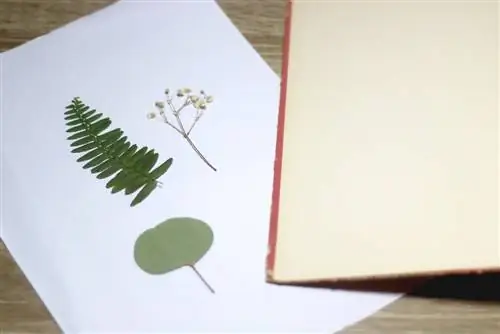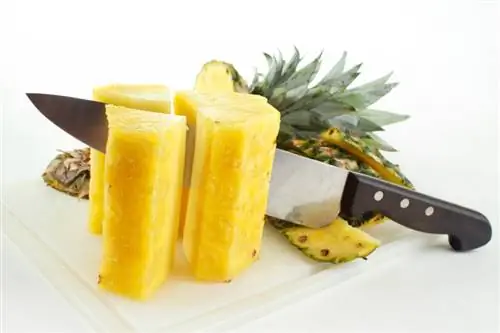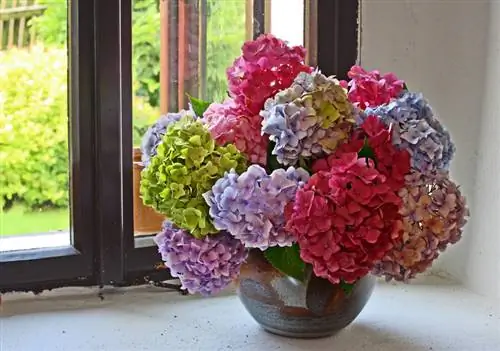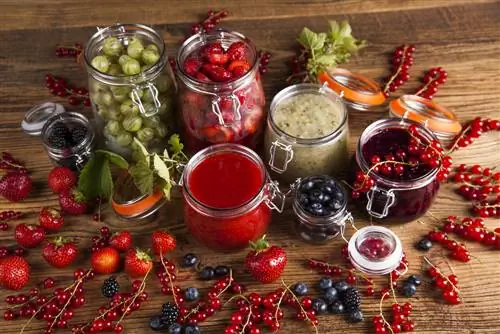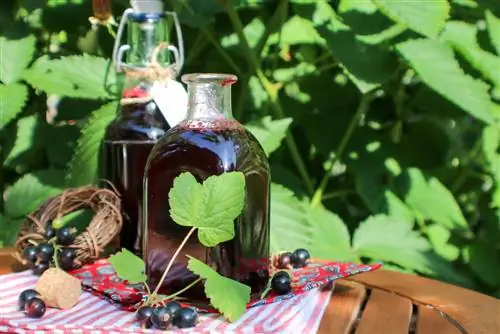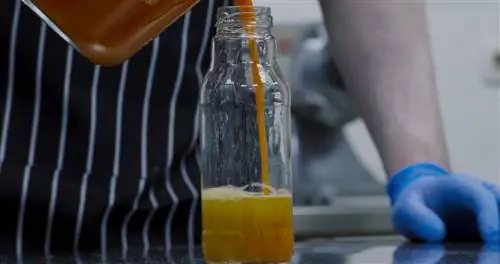- Author admin [email protected].
- Public 2023-12-16 16:46.
- Last modified 2025-01-23 11:22.
Colorful autumn leaves are very popular with craft lovers. But you can also preserve leaves that have not yet changed color and then use the diverse leaf shapes for interesting crafts or a herbarium.
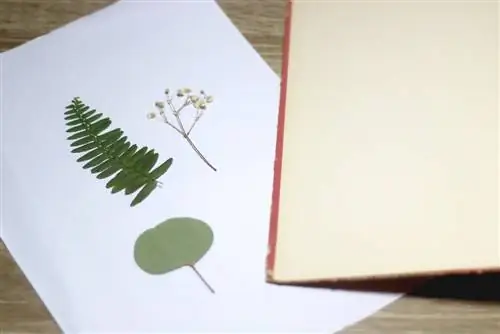
How to preserve leaves for crafts?
Preserving leaves for crafts can be done by pressing (with books or a flower press), drying (with dry s alt or silica gel) or laminating. Preservation in a glycerin-water mixture is also possible.
Pressing leaves
The easiest method is to place the leaves between tissue paper in thick books that are additionally weighted. The disadvantage, however, is that leaves with strong stems and high moisture content require up to two weeks to dry completely.
If you dry plant leaves regularly, it is worth purchasing a large-format flower press (€12.00 on Amazon).
Preserving leaves with a flower press
- Loosen the screws and open the press.
- Place a layer of cardboard on the lower wooden disc and cover it with paper.
- Place the sheet carefully and place a sheet of paper over it.
- This is followed by the second cardboard disk, another sheet of paper, the next leaf to be preserved and another sheet of paper.
- Place the wooden disc on the filled press and tighten the screws tightly.
- Change the paper every few days.
Drying with dry s alt or silica gel
If you don't need the leaves pressed completely flat, you can preserve the leaves with dry pearls or s alt.
For this you need:
- A tightly fitting container,
- Drying s alt for flowers or silica gel beads.
Procedure:
- Pour drying s alt or gel beads about a finger's width into the container.
- Place leaves on top and cover with the drying material.
- If necessary, you can insert additional leaves and add a little s alt or gel over each one.
- Autumn leaves are preserved in this way after just half a day. For fresh plant material, the process takes a few days.
- Remove and carefully shake off any remaining s alt.
Laminate sheets
If you have a laminator at home, you can seal the sheets and make them last for a very long time. Thanks to the protective plastic coating, nature's small works of art lose none of their color.
- Place the leaves on the laminating film.
- Make sure there is enough space between the sheets. They should be able to be cut out so that no air gets in.
Tip
Because fresh foliage absorbs moisture, you can also preserve them in a vase filled with a mixture of two parts water and one part glycerin. Tap the stems of the leaves with a hammer and place the foliage in the container.

